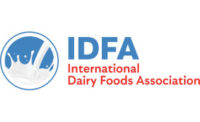After three years of negotiations, the U.S.-Mexico-Canada Agreement (USMCA) will take effect on July 1. The U.S. dairy industry achieved its top two goals for USMCA — preserving our trade relationships in Mexico, our top export market, and reducing Canadian barriers to imported U.S. dairy products.
With respect to Canada, two-way trade of dairy products between the United States and Canada reached an all-time high of $1.26 billion in 2019. The U.S. dairy industry views a transparent, rules-based trading system as an imperative for consumers and industry on both sides of the border to reap the benefits of trade.
Barriers to trade with Canada
To achieve this goal, U.S. companies must be able to fully utilize Canada’s tariff rate quotas (TRQs) for dairy products and ingredients. Unfortunately, Canada’s past administration of dairy TRQs has put in place burdensome barriers to trade that have the effect of limiting fill rates for these TRQs and insulating Canadian dairy producers from competitive exports. For example, Canada’s dairy quotas under the Comprehensive and Progressive Agreement for Trans-Pacific Partnership have an average fill rate of 12%, while many have a fill rate of 0%.
This is not driven by the market. Because Canadian farmgate milk prices are typically between 40% and 60% above international prices, one would expect all dairy quotas to be filled from an economic perspective.
In addition to TRQ administration issues, U.S. dairy companies have been further disadvantaged by other Canadian nontariff barriers. These include the special Class 6 and 7 pricing programs, which have selectively discounted Canadian milk prices below global prices and were designed to encourage import substitution.
While the International Dairy Foods Association (IDFA) is pleased that USMCA requires Canada to end Class 7 pricing and pooling, the recreation of this system in another form in the future would completely undermine the greater market access granted to the U.S. dairy industry under USMCA. It would also undermine the export thresholds for skim milk powder, milk protein concentrates and retail infant formula that Canada has agreed to implement pursuant to the agreement.
IDFA and other U.S. dairy stakeholders, in coordination with the U.S. Trade Representative’s Office (USTR), have proactively asked the Canadian government to fulfill its USMCA obligations in good faith. We are also working closing with USTR to identify and combat other barriers to trade that U.S. dairy companies face around the globe. We continue to face obstacles in two other key export markets: China and the European Union (EU).
China
Over the coming decade, China represents a $23 billion market opportunity for U.S. dairy. In addition to imposing retaliatory tariffs on all U.S. dairy imports due to Section 301 tariffs adopted by our government, China has implemented burdensome and time-consuming registration requirements for exporter facilities, dairy products and infant formula pursuant to the implementation of its 2015 Food Safety Law.
European Union
The EU also has the potential to be a large export market for the U.S. dairy industry. In 2018, the EU exported close to $1.7 billion in dairy products to the United States, including $1 billion of cheese, while U.S. dairy companies exported only $145 million in products to the EU. Negotiating a comprehensive trade agreement with the EU would help to correct the imbalance by removing current barriers, including high tariffs, small quotas and geographical indications that limit the ability of U.S. cheesemakers to market their products in the EU and around the globe.
Each of these barriers to U.S. dairy exports was highlighted in the “2020 National Trade Estimate Report on Foreign Trade Barriers” (https://tinyurl.com/y7ptxtw3) that USTR published earlier this year. IDFA will continue to work with the U.S. government to reduce these trade barriers and ensure consumers around the world have access to nutritious U.S. dairy products.




